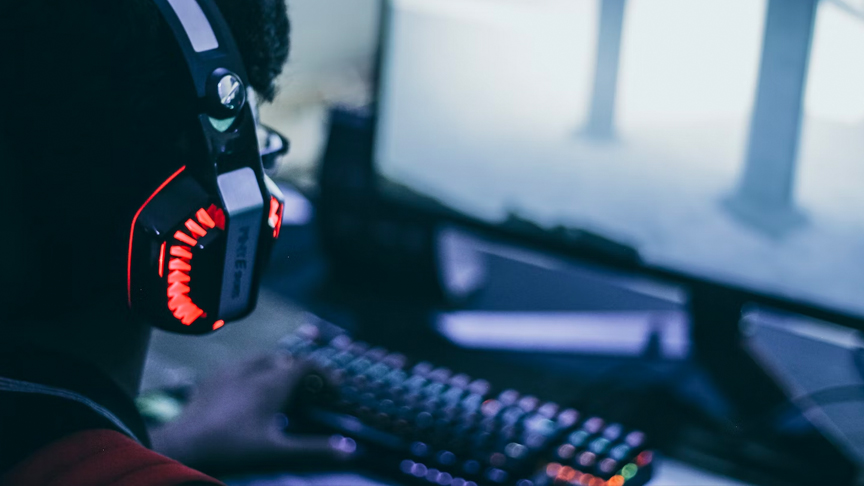Video gamers worldwide may be risking irreversible hearing loss and/or tinnitus—persistent ringing/buzzing in the ears—finds a systematic review of the available evidence, published in the open access journal BMJ Public Health.
What evidence there is suggests that the sound levels reported in studies of more than 50,000 people often near, or exceed, permissible safe limits, conclude the researchers.
And given the popularity of these games, greater public health efforts are needed to raise awareness of the potential risks, they urge.
While headphones, earbuds, and music venues have been recognised as sources of potentially unsafe sound levels, relatively little attention has been paid to the effects of video games, including e-sports, on hearing loss, say the researchers.
Gamers often play at high-intensity sound levels and for several hours at a time, they add. And one estimate indicates that there were more than 3 billion gamers worldwide in 2022.
To try and build an evidence base, the researchers trawled research databases looking for relevant studies and white papers, newsletters, reports, and proceedings, collectively referred to as ‘grey literature,’ published at any point in English, Spanish, or Chinese.
Some 14 peer reviewed studies from 9 countries in North America, Europe, South East Asia, Asia and Australasia, and involving a total of 53,833 people, were included in the review. Eleven were cohort (epidemiological observational) studies, 6 of which looked at the associations between hearing and computer or video games; 4 focused on gaming centres or personal computer rooms, which are popular in Asia; and 1 focused on mobile devices.
Reported sound levels ranged from 43.2 decibels (dB) (mobile devices) up to 80-89 dB (gaming centres) while length of noise exposure varied by mode and frequency of access–from daily to once a month, for at least an hour at a time, averaging 3 hours/week.
Impulse sounds consist of bursts lasting less than 1 second, with peak levels at least 15 dB higher than the background sound. One study reported that impulse sounds reached levels as high as 119 dB during game play; permissible exposure limits are around 100 dB for children and 130–140 dB for adults.
The International Telecommunication Union (ITU), in collaboration with the World Health Organization, describes a time–intensity trade-off, known as an exchange rate, for permissible levels and duration of exposure, explain the researchers.
For example, a permissible noise exposure level of 80 dB for 40 hours a week with a 3 dB exchange rate means the permissible exposure time halves with every 3 dB increase in noise level: at 83 dB it’s 20 hours; at 86 dB it’s 10 hours; at 92 dB it’s 2.5 hours; and at 98 dB it’s 38 minutes.
For children, the permissible noise exposure level is defined as 75 dB for 40 hours a week. Children can therefore safely listen to an 83 dB sound for around 6.5 hours, 86 dB for around 3.25 hours, 92 dB for 45 minutes, and 98 dB for only 12 minutes a week, explain the researchers.
Six studies reported on video gaming prevalence among young people, which ranged from 20% to 68%. Two South Korean studies reported a prevalence of gaming centre use at around 60%.
Five studies evaluated associations between gaming and self-reported hearing loss, hearing thresholds, or tinnitus. Of these, 2 found that school pupils’ gaming centre use was linked to increased odds of severe tinnitus and high-frequency sound hearing loss in both ears.
Another large observational study reported that video gaming was associated with increased odds of self-reported hearing loss severity.
One study reported that over 10 million people in the USA may be exposed to ‘loud’ or ‘very loud’ sound levels from video or computer games.
One study measured sound levels of 5 video games through headphones attached to the gaming console, and found that these averaged 88.5, 87.6, 85.6 and 91.2 dB for 4 separate shooter games, and 85.6 dB for a racing game.
The authors therefore concluded that the daily level of sound exposure from these video games is close to maximum permissible levels of sound exposure.
An additional 16 peer-reviewed articles and 14 grey literature sources mention gaming as a potential source of excessive sound exposure.
One grey literature source sought to discover gamers’ preferred listening levels while wearing headphones. The author concluded that gaming headphones can reach unsafe listening levels, “which could place some gamers at risk of sound-induced hearing loss.”
Three studies evaluated gender differences in gaming behaviours. Altogether, these indicated that boys played video games more often than girls, for longer periods of time, and at higher sound intensity levels.
The researchers acknowledge that some of the included studies date back to the early 1990s, and only 2 published in the past 10 years objectively measured average sound levels from video games or at gaming centres, although both reported high sound levels in these circumstances.
“Although the data provided in this review are limited, they suggest that some gamers, particularly those who play frequently, and at or above the average sound levels described by papers included in this review, probably exceed permissible sound exposure limits, and are thus engaging in unsafe listening practices, which could put them at risk for developing permanent hearing loss and/or tinnitus,” they nevertheless conclude.
There are also several key gaps in the available evidence, they add. For example, the impact of esports, geographic region, sex, and age, on hearing loss. Further research is essential to inform preventive measures and global policy initiatives, they suggest.
“The findings suggest that there may be a need to prioritise interventions, such as initiatives focused on education and awareness of the potential risks of gaming, that can help promote safe listening among gamers,” they suggest.












































































































